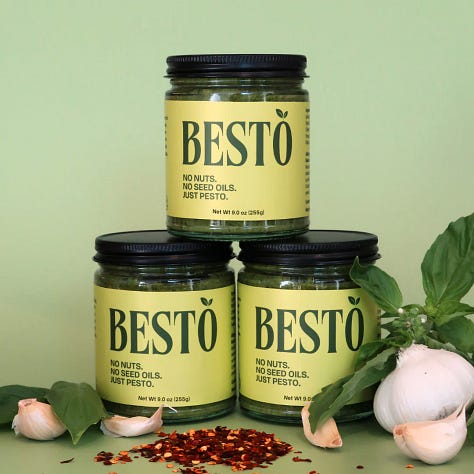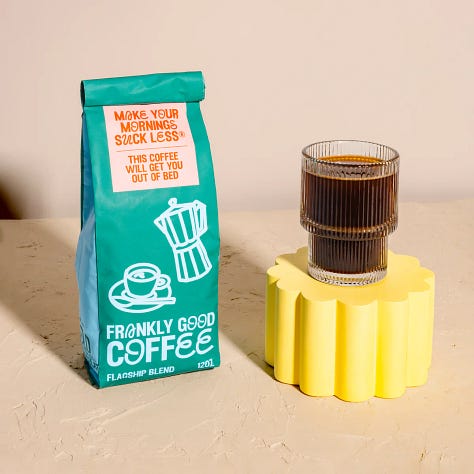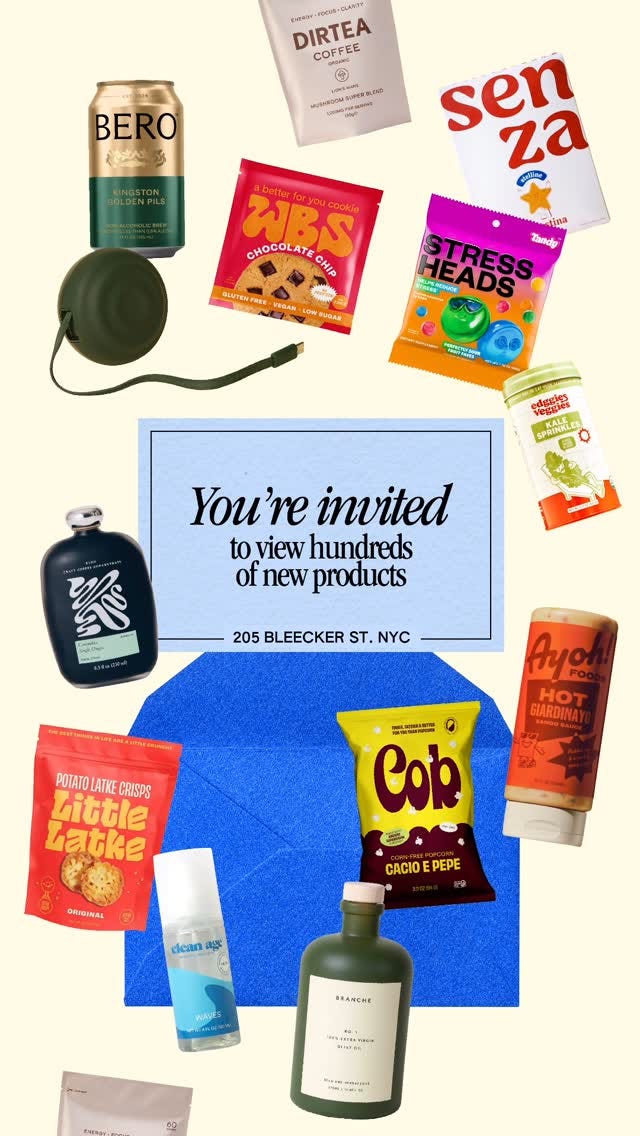5 strategies CPG startups are using to grow right now
Plus: How Vuori became a top athleisure brand, Walmart's partnership with Rebag, and more 👜
Hello and welcome back to Brandscape!
If you’re a brand nerd like me, you might’ve been following the recent launches in Pop Up Grocer, the shoppiest shop of all Shoppy Shops and “The Sephora of Food Retail.” I noticed that a lot of the brands I’ve been following announced their availability in the store, and it led me to think about what these new food/bev startups are doing to successfully build hype around their products.
Let’s dive in.
Here’s 5 ways new brands are finding success:
1. Building publicly 👀
I wrote about this a while back with Beny Yogurt, but building publicly is a great strategy for new brands. We’ve seen that consumers prioritize people > brands, so having a founder-first social strategy is a smart way to build connections with consumers. Furthermore, it allows you to generate buzz and involve your community along the way, even before you have something tangible to share with the world.
Senza, a new brand at Pop Up Grocer that sells star-shaped pastina, employed this strategy. Pre-launch, they posted a lot of great founder content, focusing on the process of perfecting the product. Through this content, they were able to generate buzz around their story, packaging, and Kickstarter campaign.
2. Tapping into niche communities 🤝
Selling to a built-in community is much easier than starting from square one. If your brand can identify a community to sell to even before you have something to offer, it allows you to focus marketing efforts on satisfying that community.
A great example of this is Bandit Running. They’ve been able to tap into the run club community through their brand. When I interviewed
, she emphasized these efforts:“The community-driven brand has a tight knit relationship with the running community and that group really feels seen and understood by Bandit. With marathon pop-ups, special member perks, and cool designs, Bandit is something customers feel excited to be a part of and tell their friends about.”
A great example of this in the food/bev world is Fuji Bar, a new matcha protein bar brand. They’ve capitalized on the popularity of matcha and high protein foods and combined the two categories. By doing this, they’re able to attract the corresponding audiences of both categories.
3. Getting into retail quickly 🛍️
This is also something Senza was able to achieve with their pastina. This is smart because it allows consumers to have a more hands-on, interactive experience with the product before purchasing. Unsurprisingly, most consumers prefer in-person grocery shopping.
4. Experimenting with new platforms 🌐
Despite the U.S. TikTok shutdown lasting all of 15 hours, it’s clear that diversifying social media efforts is still important. I’m excited to see new brands experiment with platforms like Substack and other longform media.
A brand I’ve been following recently is Lucky’s Matcha. On Substack, founder
shares BTS letters, giving potential customers a chance to learn more about the brand ethos:I think publishing on Substack is an effective way to build publicly and create a dedicated community around your brand.
5. Staying on-trend with design 🎨
Colorful/funky/Gen Z-style design has dominated the food/bev space for a while, but these days, I’m seeing a lot of emphasis on typography specifically. Logotype tends to dominate the rest of the visual elements.
Just take these brands in Pop Up Grocer as examples:



What are your thoughts on these strategies? Are there any other strategies that you’re noticing?
Headlines of the week 📰
Walmart is teaming up with Rebag to offer luxury resale. This follows the recent controversy surrounding a Walmart dupe of the Hermès Birkin bag (which can go for $20K - $100K+). Now, one can purchase a used version of the real thing on Walmart.com though their partnership with luxury resale platform Rebag. Walmart previously partnered with StockX with the same goal of offering products that one might not expect to find from Walmart. These partnerships are smart given that, in the past 5 quarters, the company has seen a 30% increase in sales from their third-party marketplace.
By focusing on versatile athleisure, Vuori grew to become a top brand in the space. This recent NYT article chronicles Vuori’s growth. Despite operating in the huge, ever-growing $95 billion athleisure category, Vuori has found success because they were one of the first brands to offer “active casual” clothes that could be worn inside or outside of yoga class. Founder Joe Kudla explained that while competitors spent big on customer acquisition, Vuori decided to prioritize profitability. This proved to be fruitful, as they were profitable just a few years after launching.
Thanks for reading this week’s letter!
- Henry
Interested in partnering with Brandscape? Reach out at readbrandscape@gmail.com 📥
Brandscape is a weekly newsletter covering marketing, brand, consumer insights, and design — all through the lens of a college student.
If you enjoyed this letter, please consider sharing with a friend ↓
Get in touch 📧
Reach out at readbrandscape@gmail.com
Follow Brandscape on Instagram
Connect with me on LinkedIn
Check out my website










Love this & absolutely agree! Another strategy new CPG brands should also lean into is collabs - especially with other brands that resonate with their target consumer
I loved this!! All of these strategies are ringing so true 👏